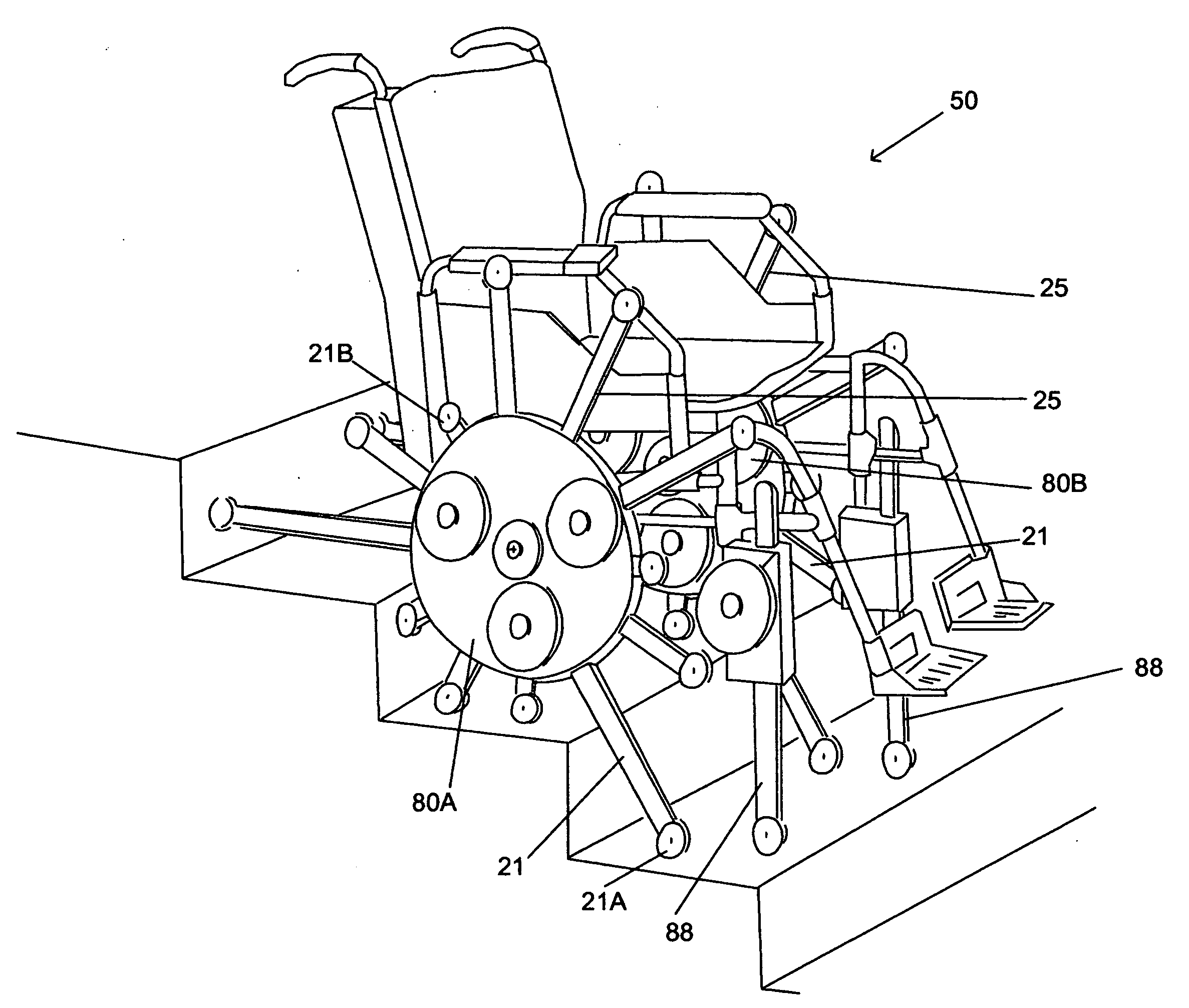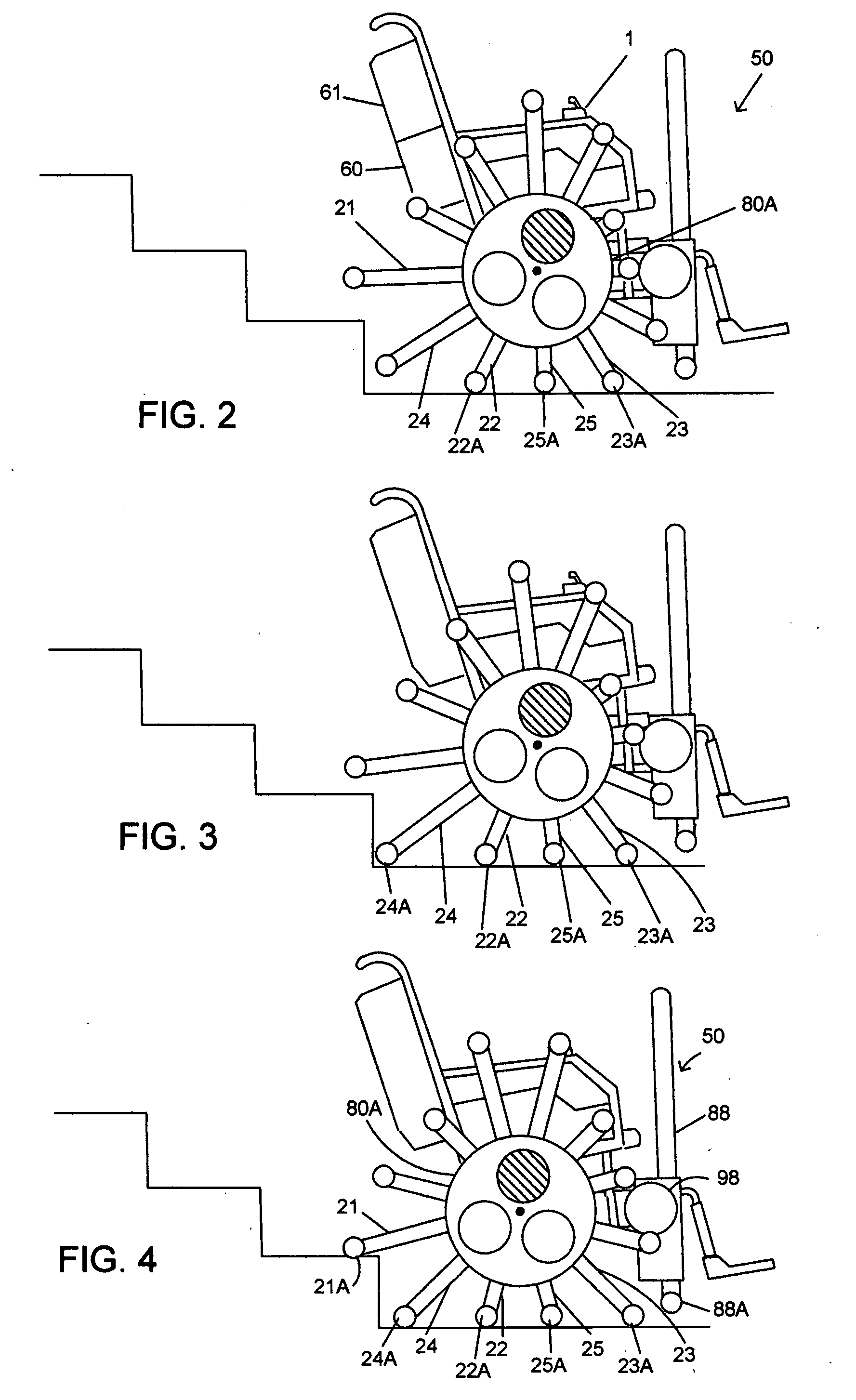Automated wheelchair
a wheelchair and automatic technology, applied in the field of automatic wheelchairs, can solve the problems of inability to perform tasks, inability to go over a curb, up or down a set of stairs, and inability to travel over rough terrain
- Summary
- Abstract
- Description
- Claims
- Application Information
AI Technical Summary
Benefits of technology
Problems solved by technology
Method used
Image
Examples
Embodiment Construction
[0018]FIG. 23 shows a perspective view and FIG. 1 shows a block diagram of a preferred embodiment of the present invention.
[0019]Main computer controller 2 receives operator inputs via operator input device 1. Corresponding control signals are sent to wheels 80A and 80B. Wheels 80A and 80B each include 6 spokes 21-26 that are controlled via motors 41-46 (see also FIG. 1). At each end of each spoke are pneumatic wheels. For example, pneumatic wheels 21A and 21B are attached to opposite ends of spoke 21. Each pneumatic wheel includes a pressure sensor. When a pneumatic wheel makes contact with a surface, the pressure within the wheel increases and a signal is sent back to main computer controller 2. Main computer controller 2 records this data. The data includes the angle of the spoke and the extension of the spoke when surface contact was made. Main computer controller 2 is programmed to compile this data received from pressure sensors and to utilize this data to calculate a terrain ...
PUM
 Login to View More
Login to View More Abstract
Description
Claims
Application Information
 Login to View More
Login to View More - R&D
- Intellectual Property
- Life Sciences
- Materials
- Tech Scout
- Unparalleled Data Quality
- Higher Quality Content
- 60% Fewer Hallucinations
Browse by: Latest US Patents, China's latest patents, Technical Efficacy Thesaurus, Application Domain, Technology Topic, Popular Technical Reports.
© 2025 PatSnap. All rights reserved.Legal|Privacy policy|Modern Slavery Act Transparency Statement|Sitemap|About US| Contact US: help@patsnap.com



